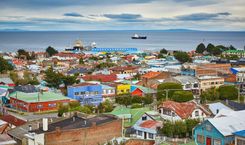Colchagua Valley: Carmenere and bold red wines in the heart of the Chile wine region
If you’re into red wine, start here. Often called the Napa Valley of South America, Colchagua Valley is home to over 1,700 vineyards and some of Chile’s biggest names in wine. Carmenère is the star – rich, peppery, and uniquely Chilean – but you’ll also find top-tier Syrah and Malbec.
This is one of the most visitor-friendly Chile wine regions. Think rolling vineyards, stylish tasting rooms, and wineries like:
- Casa Lapostolle – Elegant wines with French roots and a hilltop tasting room.
- Viña Montes – Known for bold reds and a feng shui-designed cellar.
Time your Chile itinerary for March and you’ll hit the annual Grape Harvest Festival in Santa Cruz – three days of tastings, parades, music, and all things vino.
Beyond the wine, the valley delivers on adventure too – with options for hiking, biking, and horse riding through vineyard-draped hills.
How to get to Colchagua Valley
It’s a bit farther than Maipo or Casablanca, but worth the trip:
- By car – Around 2.5-3 hours from Santiago to Santa Cruz, the main hub.
- By tour – Multi-day wine tours often include Colchagua along with other regions.
- By bus – Buses run from Santiago to Santa Cruz, but you’ll need taxis or transfers to reach most wineries.














